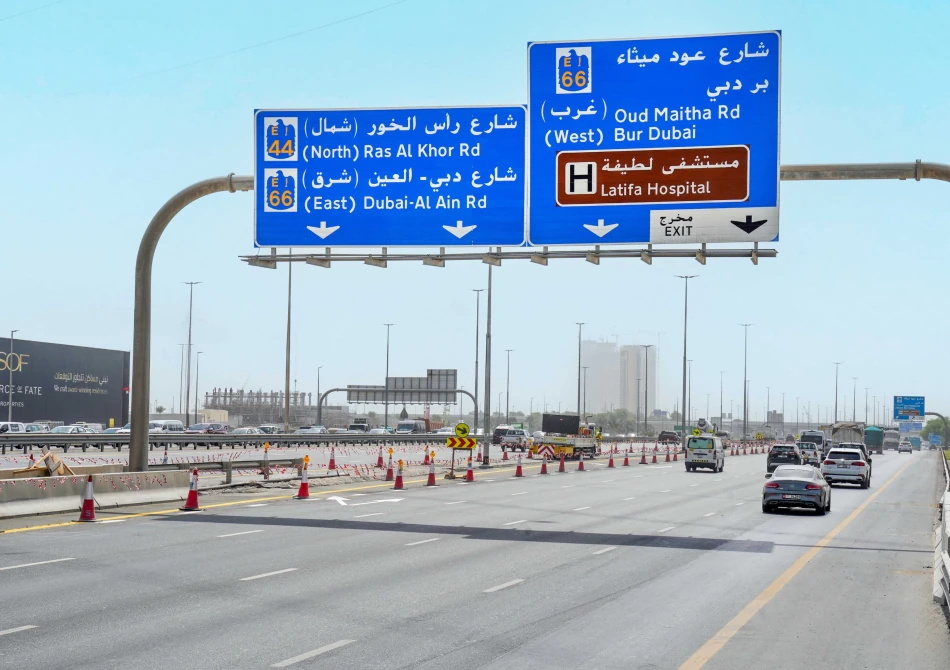
Dubai's Roads Authority Inaugurates New Exit Towards Ras Al Khor Street
Dubai's Strategic Infrastructure Push: New Traffic Exit Cuts Commute Times by 54%
Dubai's Roads and Transport Authority (RTA) is opening a new traffic exit in early August that will slash journey times from 13 minutes to just 6 minutes during peak hours—a dramatic 54% reduction. The infrastructure upgrade, connecting Financial Center Road to Ras Al Khor Street near Bu Kadra intersection, represents Dubai's accelerating effort to future-proof its transport network as the emirate experiences unprecedented urban expansion.
Why This Matters Beyond Traffic Flow
This seemingly routine infrastructure announcement signals something larger: Dubai's methodical preparation for sustained economic growth. The Ras Al Khor area isn't just another district—it's a strategic corridor linking major commercial, industrial, and developmental projects that form the backbone of Dubai's diversified economy.
The timing is particularly significant. As global cities grapple with post-pandemic urban planning challenges, Dubai is doubling down on physical infrastructure investments that complement its digital transformation initiatives. This approach mirrors Singapore's integrated urban planning model, where transport efficiency directly supports economic competitiveness.
The Economics of Efficient Movement
Quantifiable Impact on Business Operations
The 54% reduction in travel time translates to measurable economic benefits. For logistics companies, freight operators, and daily commuters in this commercial hub, seven minutes saved per journey compounds into significant cost savings and productivity gains over time. When applied across thousands of daily trips, this infrastructure improvement could generate millions in economic value annually.
Strategic Location Advantage
The Bu Kadra intersection serves as a critical junction for vehicles moving between Dubai's financial district and industrial zones. By reducing bottlenecks here, Dubai is essentially increasing the economic velocity of goods, services, and human capital flowing through one of its most commercially vital arteries.
Part of a Broader Infrastructure Strategy
This new exit builds on recent improvements in the Ras Al Khor area, including the expansion of Exit 25 from Ras Al Khor Street to Al Khail Street. That project doubled capacity from 1,500 to 3,000 vehicles per hour by converting a single lane to dual lanes—a 100% capacity increase that reduced peak-time delays from 7 to 4 minutes.
These incremental but substantial improvements reflect Dubai's systematic approach to infrastructure development, contrasting with the mega-project announcements that typically grab headlines. The focus on practical, measurable improvements suggests a maturation in Dubai's urban planning philosophy.
Global Context and Competitive Positioning
While cities like London and New York struggle with aging transport infrastructure, Dubai's ability to rapidly implement targeted improvements provides a competitive advantage in attracting businesses and talent. The emirate's approach—quick implementation of high-impact solutions—offers a model that other rapidly growing urban centers in Asia and the Middle East are likely to study and replicate.
For investors and businesses evaluating Dubai as a regional hub, these infrastructure investments provide tangible evidence of the government's commitment to maintaining operational efficiency as the city scales. In an era where supply chain resilience and operational agility determine competitive advantage, such infrastructure reliability becomes a crucial factor in location decisions.
Looking Forward
The RTA's emphasis on "quick traffic solutions" suggests more targeted improvements are coming. As Dubai prepares for Expo legacy projects and continued population growth, these surgical infrastructure enhancements may prove more valuable than grand transportation megaprojects in maintaining the city's reputation for efficiency and business-friendly operations.
Most Viewed News

 Sara Khaled
Sara Khaled






